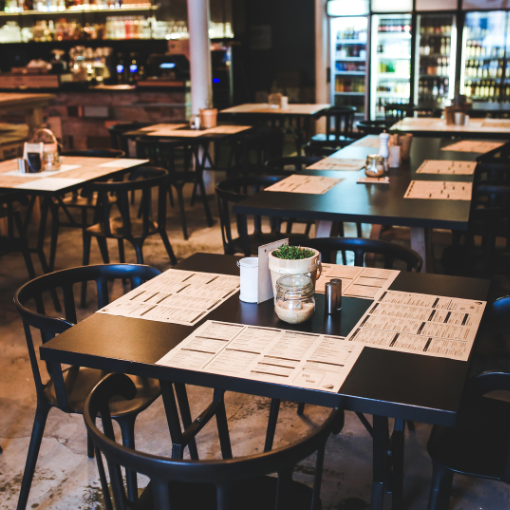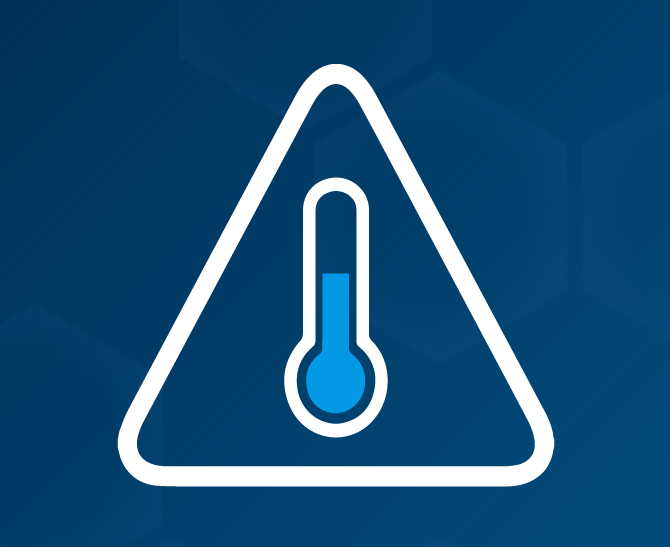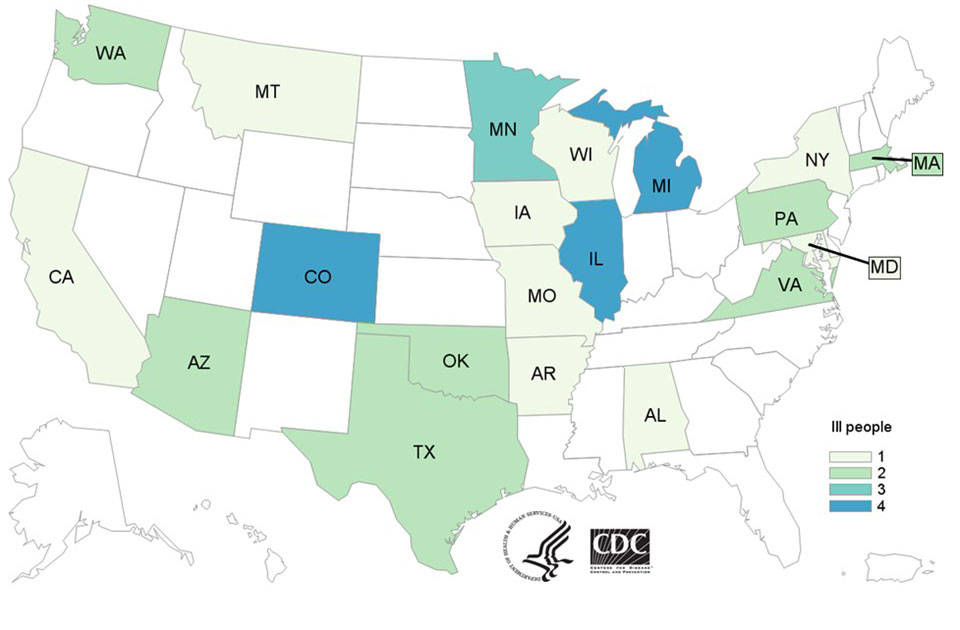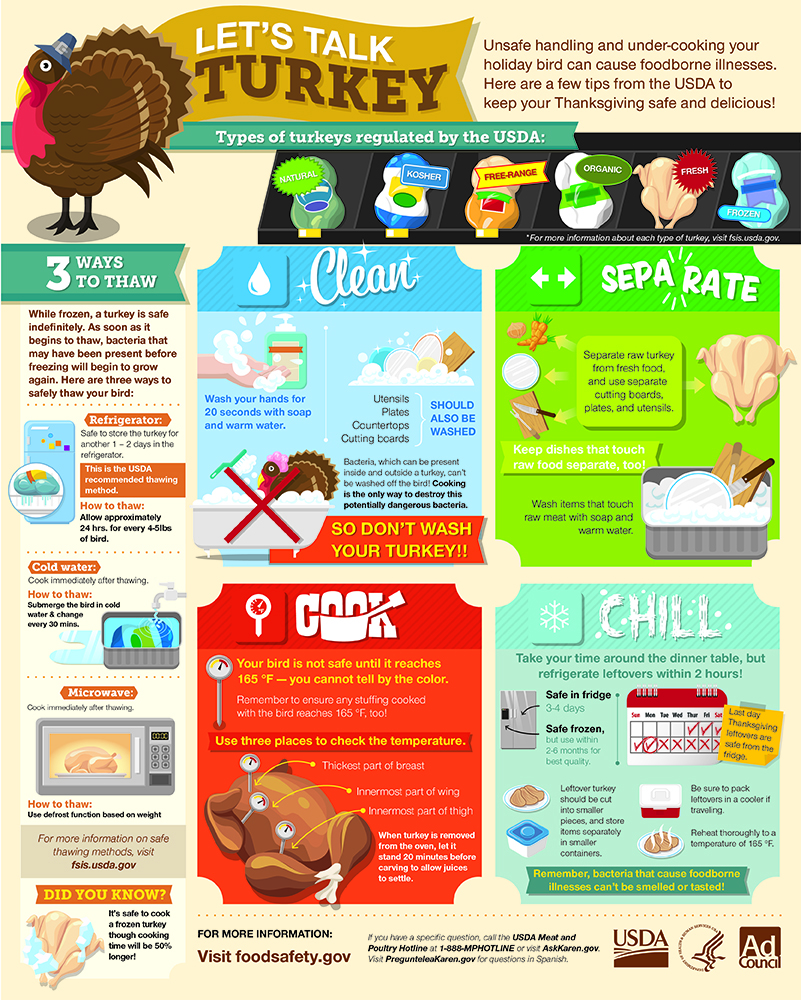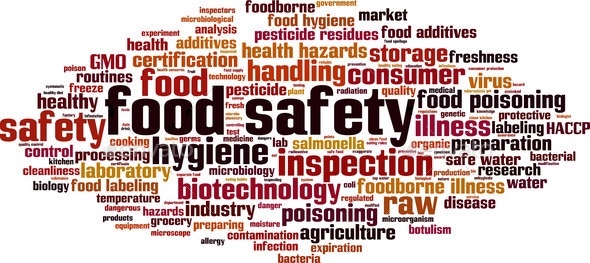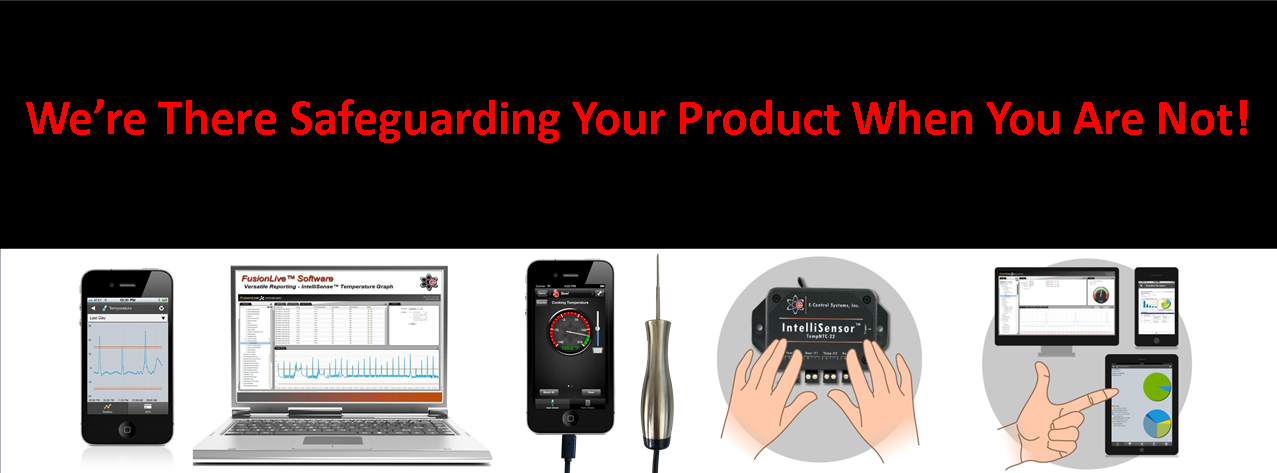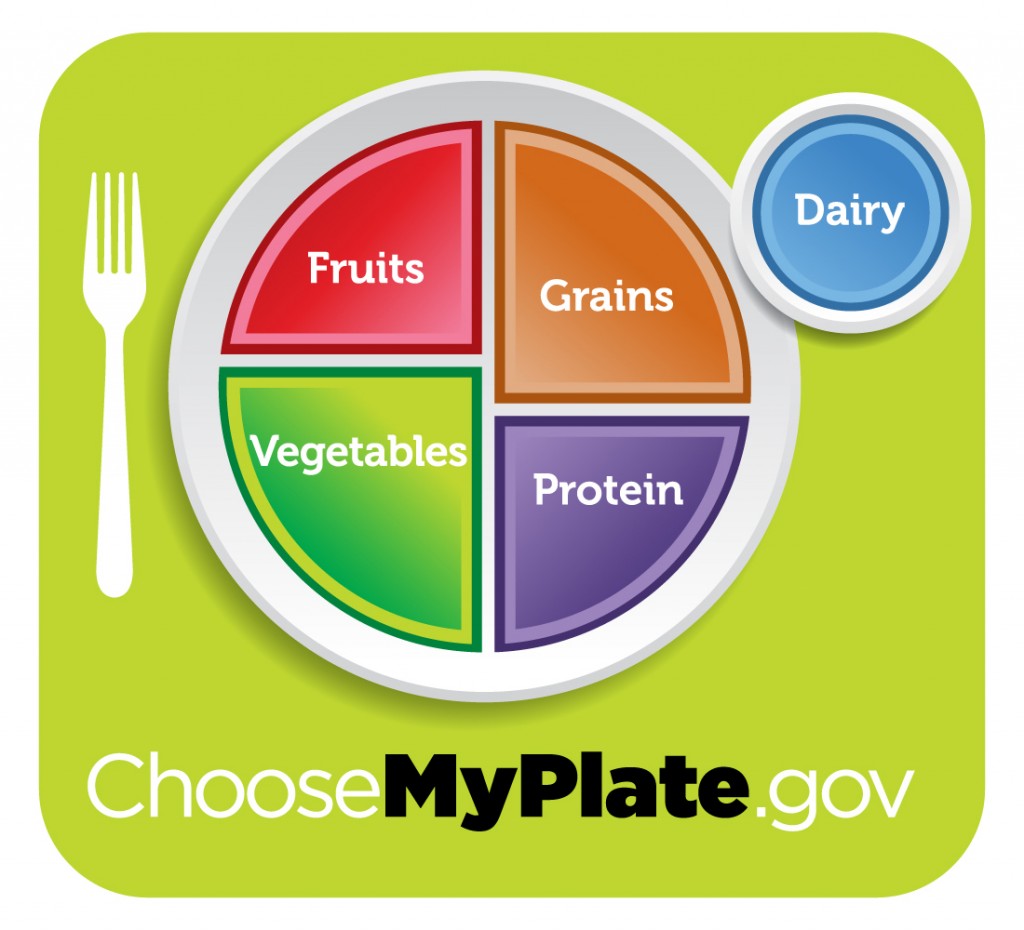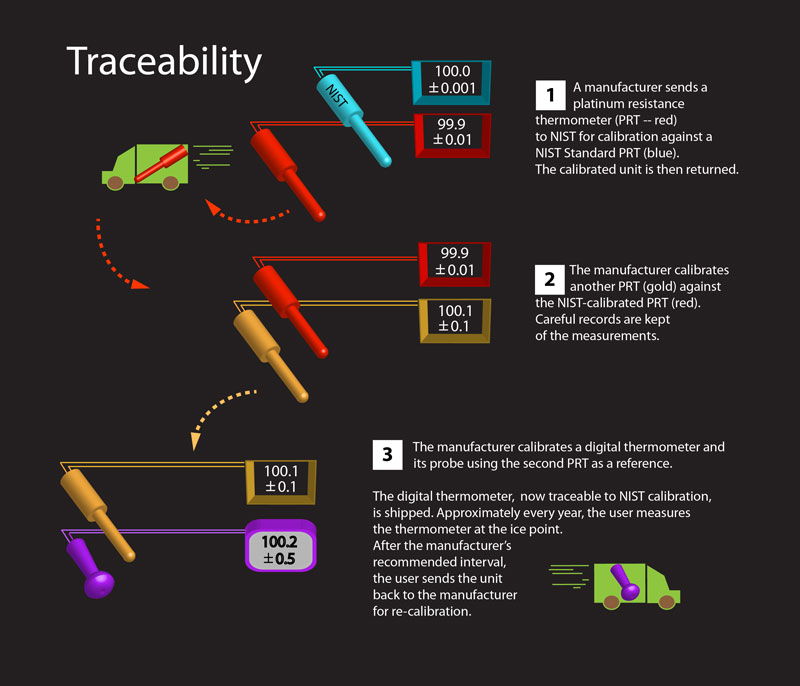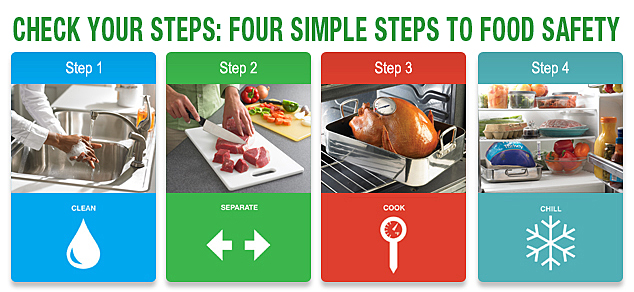Proper Food Cooling Process for Restaurants
When food is prepared that will not be served immediately — for example, when you partially prep, or “par cook” dishes early to save time when they’re ordered — it’s important to get the food out of the temperature danger zone as fast as possible.
How to Cool Food Properly in Your Restaurant
The General Rule
Foods that need time and temperature control to be safely consumed, also known as TCS food for short, must be cooled from 135˚F to 41˚F or lower. This must also be done within a minimum of six hours.
The danger zone for food is a range between 41˚F and 135˚F. It’s in this range that harmful bacteria and foodborne illness can thrive. Furthermore within that range, bacteria grows even faster between 125˚F and 70˚F. After food has been cooked, it needs to be brought through this temperature range quickly to reduce the growth of bacteria.
Follow these guidelines when Cooling Food:
- First, cool food from 135˚F to 70˚F within two hours.
- Then cool it from 70˚F to 41˚F or lower in the next four hours.
Initial 2-Hour Cool is Critical
The initial 2-hour cool is very important. This is when your food is passing through the temperature range that supports the most rapid bacteria growth. If food has not reached 70 F within two hours, it must be reheated to 165 F for 15 seconds and then cooled again or thrown away. With this said, the total cooling time should not be longer than six hours.
Best Practices for Cooling Food Properly
Food needs help cooling down quickly; it can’t do it on its own. Factors that affect how quickly foods will cool down include:
- Size of the food item being cooled. The thickness of the food or distance to its center plays the biggest part in how fast a food cools.
- Density of the food. The denser the food, the slower it will cool. For example, chili will take longer than chicken noodle soup.
- Container in which a food is stored. Stainless steel transfers heat from foods faster than plastic. Initially loosely wrap food items.
- Size of container. Shallow pans with product depth less than 2 inches allow the heat from food to disperse faster than deep pans.
Never Hot on Cold
Your food will not move through the unsafe range fast enough if it is still hot when placed in a cooler or freezer or kept in bulk. Also, placing hot food in a cooler may raise the temperature of everything else being stored in that freezer, and put it into risk.
Divide to Reduce Time
Start the cooling process by reducing the size or mass of your food. A cook can speed up the cooling process by cutting large food items into smaller pieces and dividing large containers into smaller containers.
Approved Methods to Cool Food
Approved and efficient ways to cool food include:
- Ice-Water Bath – This method promotes faster and more even cooling of your food. Food should be periodically stirred when using this method.
- Ice Paddles – Ice paddles are containers filled with water and frozen. They are used to stir food while cooling in an ice-water bath.
- Adding Ice as an Ingredient – Use ice in your recipe if water is an ingredient to expedite the cooling process.
- Blast or Tumble Chiller – fans blow chilled air over your cooling food to cool it down faster.
- Manual Process – Food containers can be loosely covered when placed in cooling or cold holding equipment. Containers may be uncovered if your food is protected from overhead contamination.
Temperature Monitoring is Essential
To ensure the cooling process is properly managed and stays within safe parameters, it’s crucial to monitor food temperatures regularly. Consider implementing wireless food service temperature monitoring systems from E-Control Systems for consistent tracking and peace of mind. With these systems, you can monitor the temperatures of your cooling units in real-time, reducing the risk of foodborne illness and ensuring compliance with health regulations.
How To Properly Cool Food FAQ's
What Are the HACCP Rules for Cooling Food?
To comply with HACCP rules and prevent bacteria from growing, the temperature of hot food should be reduced within 2 hours from a temperature of 135°F to 70°F, then followed by cooling to 41°F or below within four additional hours. Using shallow containers is one method used to cool food more rapidly. You can also divide food into smaller containers, and use ice baths, or blast chillers to ensure time in the temperature danger zone is minimal. If you loosely cover or keep food uncovered during cooling, it will allow heat to dissipate. Arrange containers to maximize heat transfer and monitor food with a thermometer to ensure it stays safe, to minimize foodborne illnesses.
What Is the 2-4 Rule for Cooling Food?
Using the 2-4 rule is how to properly cool food and keep it safe by minimizing the risk of bacterial contamination. This method ensures food temperatures are lowered from 135°F to 70°F in two hours, and then cooled to 41°F or below during the next four hours. Following these procedures complies with HACCP guidelines.
What Is the Proper Cooling Process for Hot Food in Restaurants?
To cool hot food properly in restaurants and keep it safe for consumption, follow strict cooling protocols using the 2-4 method so bacteria won’t cause it to become contaminated and cause foodborne illness.
Why Is It Important to Cool Food Quickly in a Restaurant?
When a restaurant doesn’t immediately serve food, and it stays in the temperature danger zone (41°F to 135°F) for too long, it can cause food to spoil, and harmful bacteria can rapidly multiply. In order to keep food out of the danger zone, the HCCAP recommends using the 2 to 4 rule to protect customers’ health and avoid safety violations. The density of the food affects how long it takes to cool, and so does the container the food is stored in, with stainless steel transferring heat from foods quicker than plastic does.
What Should Be Done if Food Doesn't Cool to 70°F Within 2 Hours?
Food should be reheated to 165°F and cooled again, if it isn’t cooled to 70°F within two hours. Properly cooling food won’t be exposed to unsafe temperatures or bacteria if you follow the proper method. Consistently checking the temperature of food is part of proper food handling and management.
Is It Safe to Cover Food While It's Cooling?
If food is covered while you’re cooling it, it might retain moisture or trap heat, or create condensation that can accumulate, slowing the cooling process and promoting bacterial growth. Cover food only after it has cooled sufficiently. Soups might benefit from loose covering, but baked items should stay uncovered to limit moisture absorption.
How Can Restaurants Monitor Cooling Temperatures Effectively?
To properly cool food before refrigerating, you can use an E-Control Systems wireless food service temperature monitoring system. It maintains proper cooling temperatures, has real-time tracking, and will ensure your restaurant complies with health regulations and stores food at a safe cooling level.
Related Topics
- Food Safety Issues in Restaurants
- Food Storage Guidelines for Restaurants
- Food Service Temperature Monitoring Systems
- Importance of Temperature Control in the Food Industry
- Food Safety Operations
- Food Service Temperature Monitoring
- HACCP-Based Standard Operating Procedures
- Food Safety Inspection Tools
- HARPC vs. HAACP
- Why Are Restaurants So Cold?




